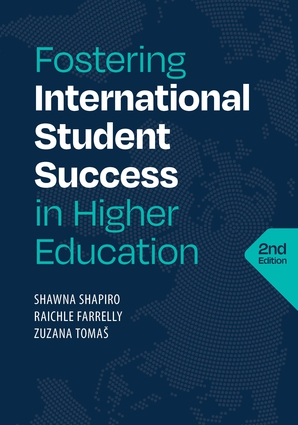

Fostering International Student Success in Higher Education, Second Edition
0-3
FOREIGN LANGUAGE STUDY
152 Pages, 7 x 10
Formats: Paperback, ebook: EPUB
Paperback, $42.95 (US $42.95) (CA $57.95)
Publication Date: March 2023
ISBN 9781953745064
Overview
Copublished by TESOL and NAFSA
The increase in the number of international students attending English-dominant schools brings benefits as well as challenges for institutions. Shapiro, Farrelly, and Tomaš provide a lively, informative discussion that answers the questions instructors commonly ask when seeking to ensure success for these students: What do I do to help students be successful in U.S. academic culture? How can I ensure that the content for my course is comprehensible to students who are still learning English? How do I design assignments and assessments that are fair while still acknowledging the difficulty of doing academic work in a second or foreign language? How might I treat international students as a linguistic and cultural asset in the classroom, and help them to become institutionally integrated?
The second edition of this best-selling book is filled with anecdotes, reflection questions, strategies, resources, and activities that can easily be adapted to curricula in various disciplines and provide instructors, as well as academic advisors and administrators, with tools for responding to common classroom challenges.
**This title also includes a companion website with online resources.**
Author Biography
Shawna Shapiro is an associate professor of writing and linguistics at Middlebury College. Her research focuses on college transitions and innovative pedagogies for multilingual/second language writers. Her research has appeared in numerous peer-reviewed journals, including TESOL Quarterly, TESOL Journal, and Research in the Teaching of English.
Raichle “Rai” Farrelly is an associate teaching professor and the director of the TESOL Program at the University of Colorado Boulder. Her professional interests include teacher education, reflective teaching, community-engaged learning, and teaching refugee-background adults.
Zuzana Tomaš is a professor of ESL/TESOL at Eastern Michigan University. A former international student and a Fulbright scholar, her scholarship focuses on multilingual literacy pedagogy, community engagement, global citizenship, and teacher education.





